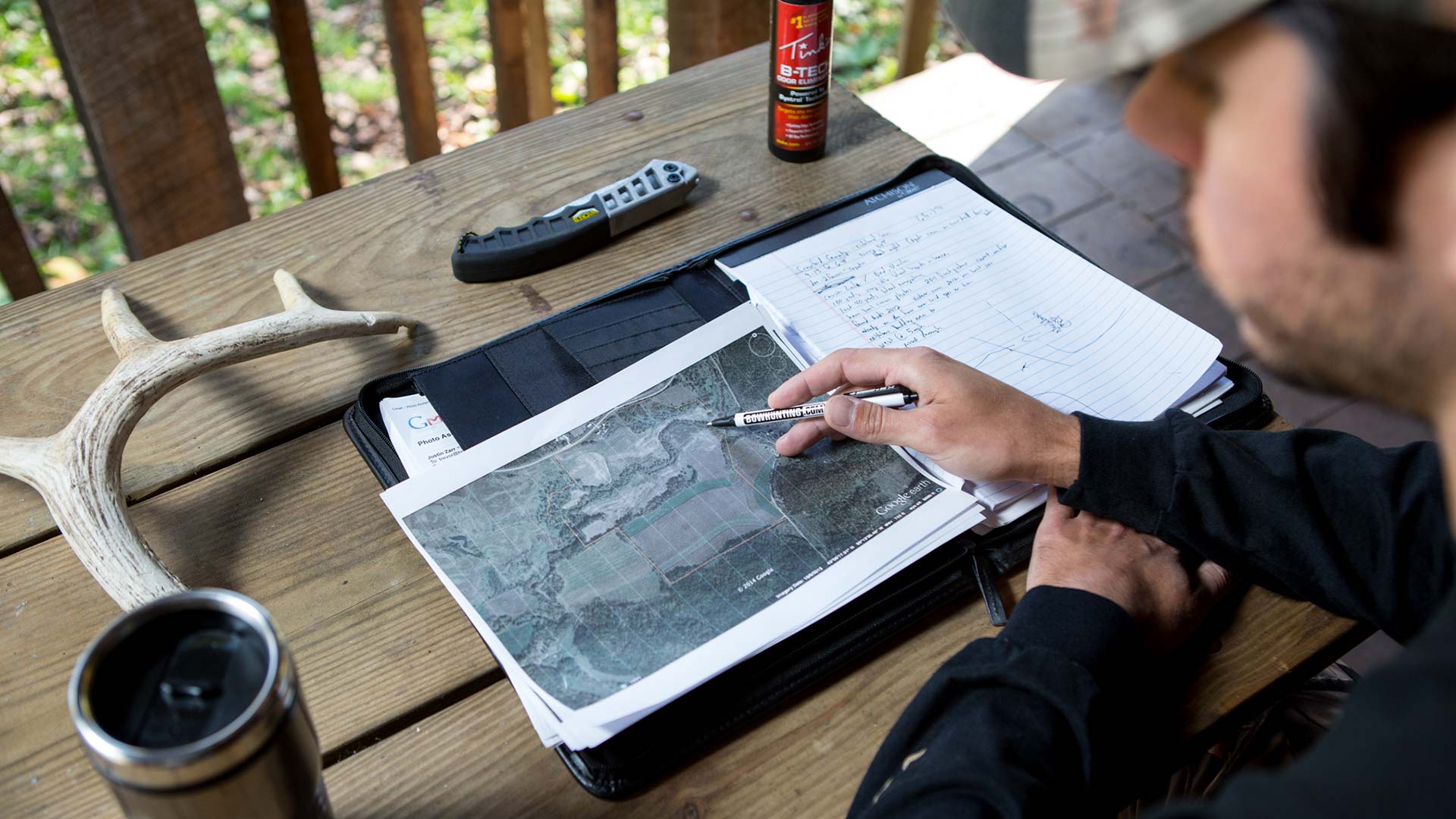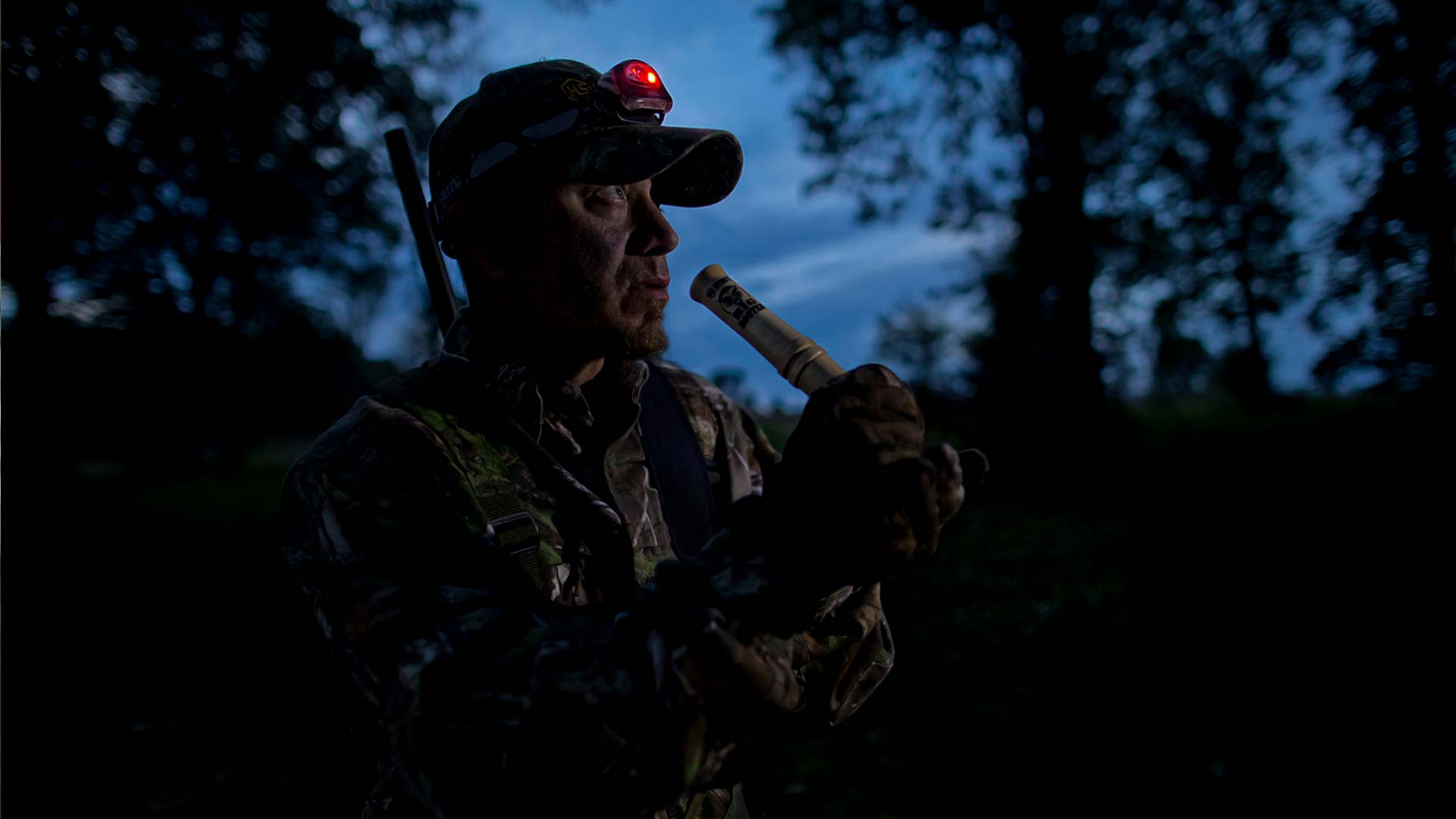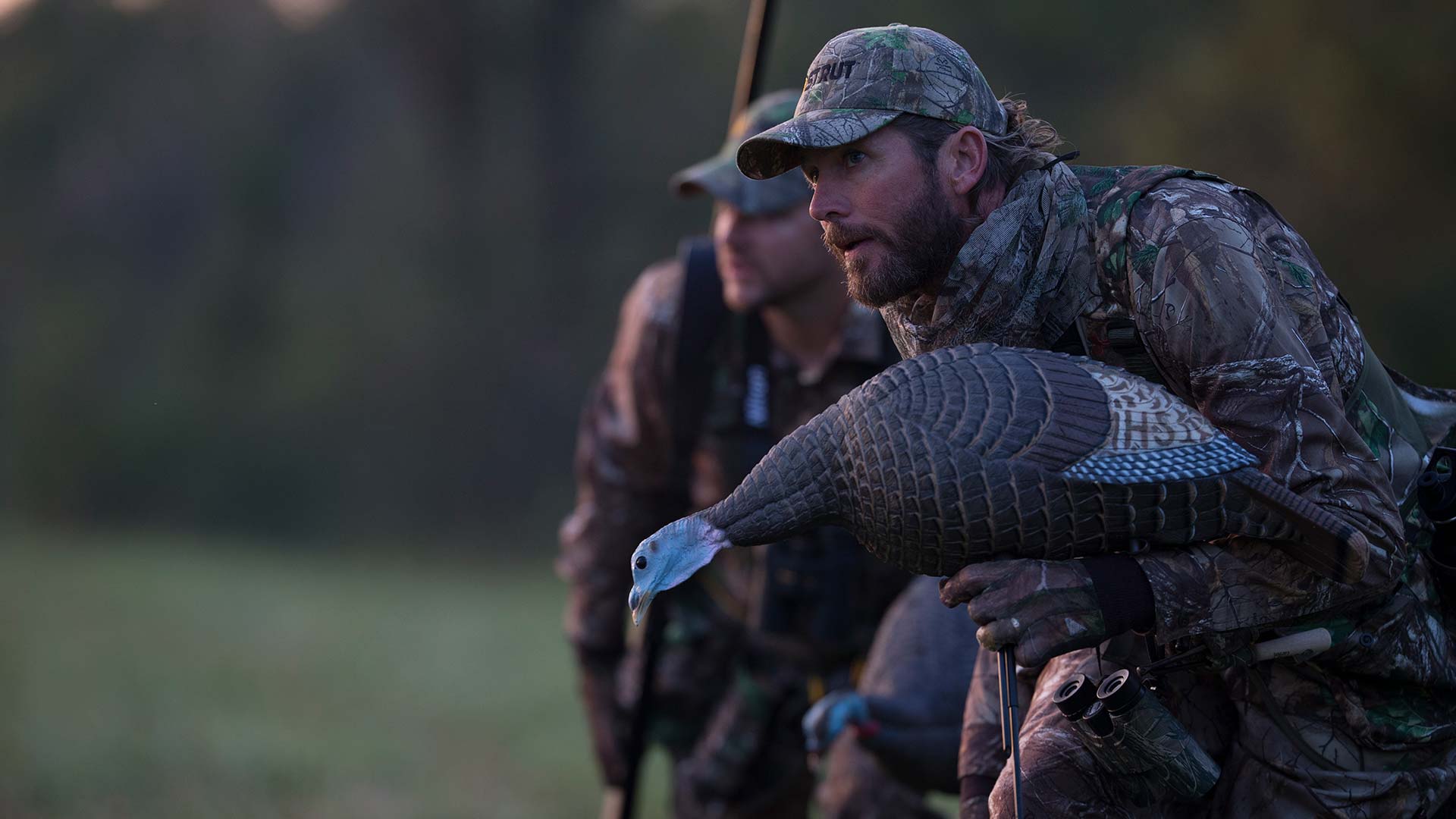How many times have you heard these statements? “There are too many hunters on public land.” “Public land birds are educated and call shy.” “Public land turkeys are all shot out and there are no birds there.” If you have heard these, you’re not alone. When I talk turkey with other hunters and I hear them make comments like these, I just smile because these hunters are missing out on prime hunting opportunities because of their distaste for public land. Growing up in Wisconsin, we didn’t have the turkey population that we do today. Often it would take several years to draw turkey tag. When you did draw a tag, turkeys in Wisconsin could only be found in select counties in southwestern Wisconsin.
My father took my brother and me to a southwestern county in Wisconsin to try and hunt my first wild turkey. That trip started an addiction to my turkey hunting and the start of understanding public land long beards. Seventeen years later I’m more addicted to this sport than I was back then, and I didn’t think that was even possible. Since hearing my first turkey gobble on that hunting trip with my father I have pursued long beards across the US on public land.
Several years ago I completed my first public land grand slam and yes I can honestly say that I would rather hunt long beards on public land than I would on private property. The big reason is that I love having the option of room to roam, studying maps, and many different types of terrain to pursue these kings of springs. In this article I will share some my tactics and tricks to connect consistently on public land birds. The tactics that I share are not “the” way but “a” way, to be adapted to the public land that you hunt and tactics that you utilize.
Doing Your Turkey Hunting Homework
First if you’re interested in hunting public land long beard in a new state or looking to take on a new experience in your own home state you first must do your home work. The first thing that I do is research the states DNR or Fish and Game website that I plan on hunting. Usually from these websites you can get a better understanding for what the state has to offer for public hunting opportunities, whether it is national forests, state land, county land, or private land with public access. Once I have a better understanding for the public land available the next thing I do is, contact game biologists for that particular state and area, also the National Wild Turkey Federation has listings of biologist that they offer for given areas across the US. I will also contact local conservation wardens, and even sheriff’s departments. (Please don’t call 911! Or they will come find you!)

The reason I contact wardens and law enforcement officers is that they are traveling the county roads at all times of the day and every day of the year. These men and women are a great resource for informing you as to where they are seeing birds strutting and crossing roads. Don’t be afraid to ask questions (if you’re not annoying them from your questions, you’re not asking enough questions). Next once you get a better idea of where in the state and public land opportunities you want to hunt, invest in good maps, both aerial and topographical. Also I strongly advise that you purchase a plot book. (A plot book is a book that contains property boundaries and size of property blocks along with landowner’s names) From looking at maps and making many phone calls will put you in the general area that you wish to hunt, and now the legwork begins.
Pre Season Turkey Scouting
Scout, scout, and scout some more. If I’m heading out of state for a turkey hunt I will give myself several days for scouting. What is nice about turkeys versus deer is that long beards are vocal. In other words a major part of scouting is getting up before dawn and heading to the spots that you have located from your research and listening at first light. Occasionally I will use a locator call but never a hen call before the hunting season because I don’t want to educate or possibly call in a bird before the season.
While listening don’t just listen to where they are roosted, also pay attention to where they fly down to and travel. It will give you a better understanding as to the travel route to set up on during hunting season. While scouting I like to walk logging roads looking for tracks, strut marks and dust bowls, also pay attention in the woods for turkey scratching giving you a better understanding of potential feeding locations. The key is to get out there and wear some shoe leather off of your boots, phone calls, and maps can only get you in the general area needed to locate long beards but the leg work will put you in the exact spots needed to fill your tag this year.
Putting Birds to Bed
Another tactic that I utilize on all of my turkey hunts is called putting birds to bed. When I first started turkey hunting I thought that this tactic was utilized by everyone, but the more and more I talked to fellow turkey hunters the more I realized that a lot of hunters did know about it or never utilized it in their hunts. What putting birds to bed is basically getting a long beard to shock gobble just before dark the night prior to your hunt and moving in on that same bird before first light the next morning. What I like to do is head to the areas that I have scouted out earlier in the week or season, and just before dark, after the sun has set and light is fading, I will walk owl hooting or crow calling listening for a gobble.

Once I get a bird to respond I will move in towards him closing the distance until I get him pegged to the exact area that he is roosted. Be very careful not to bust him or any hens that he may have roosted nearby. Once I get as close as I can without busting him or his ladies if he has any, I mark that location on my GPS. Once marked I cautiously back out of the area and head back to camp getting ready for the next morning’s hunt. When I first started turkey hunting I always read and was told to look for big pine trees because birds like to roost in them.
Well through the years I’ve learned that isn’t always the case. Often I will find birds roosted in large oaks with sprawling limbs, to maples to even small tamaracks. So looking for a particular species of trees won’t do you any good. Rather if you’re looking for potential roost sites keep terrain and weather in mind. I hunt public land in the bluff country of western Wisconsin and on a calm clear evening I will find birds roosted three quarter of the way up the ridge in either pines or oaks. If the weather gets bad, such as rain or real windy, often these birds move to lower locations out of the wind and seem to prefer pines. So during clear calm days ill tend to look for birds near the top of the ridges and if the weather is poor I tend to look for them down in the flats or mature pine plantations out of the wind and the elements.
Morning Turkey Hunting Set-Up
Once the next morning arrives I head out to my marked location well before daylight. Using my GPS to navigate me I head to my pre marked spot under the cover of darkness. Once I get to my location I have two choices, either to set up at that spot or to make a final maneuver to a better location to where the bird may fly down to or head once on the ground. You can be the best turkey caller in the world but if you’re not set up where he wants to go you will never call him in. To get a better idea of where he may go at fly down, utilize your scouting of tracks, scratchings, and other turkey info you gathered previously.
Also another good tip is, if you watch a long beard fly up in to his evening roost, pay attention to where he flew up from. Chances are he will fly down to that same spot. Another question most people have is how close should I set up from a roosted tom? And I have asked myself this question many of times on many of sets. What I have learned the hard way and from trial and error is that there is no set answer. The old rule of thumb was at least one hundred yards. However I don’t believe that to be true because it will depend on terrain, foliage, wind, and other variables.
For example if your hunting a long beard on a wide open oak ridge and it is dead calm out and early in the season, you won’t be able to get to close to him on the roost because with the dry oak leaves and quiet conditions you will sound like a tank coming through the woods. When I was turkey hunting down in Oklahoma, often the closest we could get to a roosted bird was about two hundred yards, because it was wide-open terrain with very few trees and sparse cover.
Now when I was hunting in the Black Hills of South Dakota we could often sneak in less than a hundred yards. More often than not we were able to watch the long beards still up in the roost because the pines and the pine needles on the ground helped us conceal our noise walking in and setting up. So to answer the age old question of how close should you set up is really up to you. I will tell you that you want to be as close as possible without bumping birds; it will depend on the conditions in which you are hunting. Once I am set up at my final location, which will be well before daylight (some times I’ve been set up almost an hour before the first songbirds started singing.)

As it breaks daylight and gets closer to fly down I may let out just a couple of tree yelps and some purrs just to let him know that I am here. But be very careful not to call too much. The reason is that I don’t want him gobbling while he is on the roost for two reasons. First so he doesn’t attract other hunters because the more mouthy and vocal he is the more likely other hunters in the woods will hear him and move in on him to. Second the more he gobbles the better the odds that he will attract hens bringing you even more competition for his love. If he gobbles to my soft yelps I immediately stop calling and wait for him to fly down before I call again.
Once he is on the ground I will begin calling and working him with yelps, purrs and even cutting. If he sounds interested and starts working my way or closing the distance to me, often I will quit calling and make him come look for me. The natural order is for the hens to come to the toms. If I quit calling, it will make the long beard think that his sweet talking hen has left him and makes him worry that he is going to lose out on a prime opportunity at a seductive hen. When I quit calling I want to get his little walnut brain to start thinking and worrying that I left, which makes him come find me. When you keep him gobbling by calling you make him think he is Romeo and he becomes so full of himself that he will hold his ground strutting and showing off, wanting you to come to him. These birds have incredible hearing and will literally have you pegged almost to the exact tree your calling from.
While working the bird you roosted pay attention for satellite toms that may come in quietly to your calls. These satellites will often come in quietly with hopes of stealing the boss gobblers stray hens. Just because the bird your working is out of range or out of site from your set up, don’t get complacent because a satellite could be coming in quietly. If you talk to any hunters who have spent years chasing these cagey birds will tell you more than one occasion they where busted by a tom coming in quietly. Using a ground blind makes it a lot easier to get away with movement because most of the times that I was busted by a long beard coming in quietly was from me stretching or repositioning against a tree, and that little bit of movement was all she wrote for those long beard’s eyes, and just as quick as they came they were gone. With a ground blind the majority of your movement is concealed allowing you to stretch and wait the long beard out.